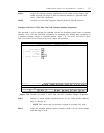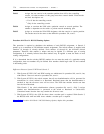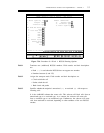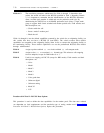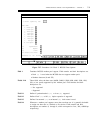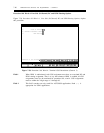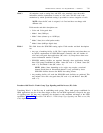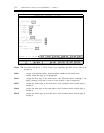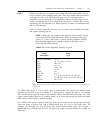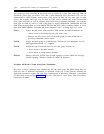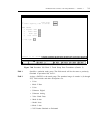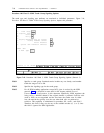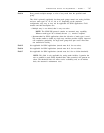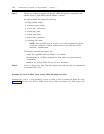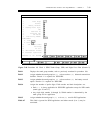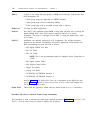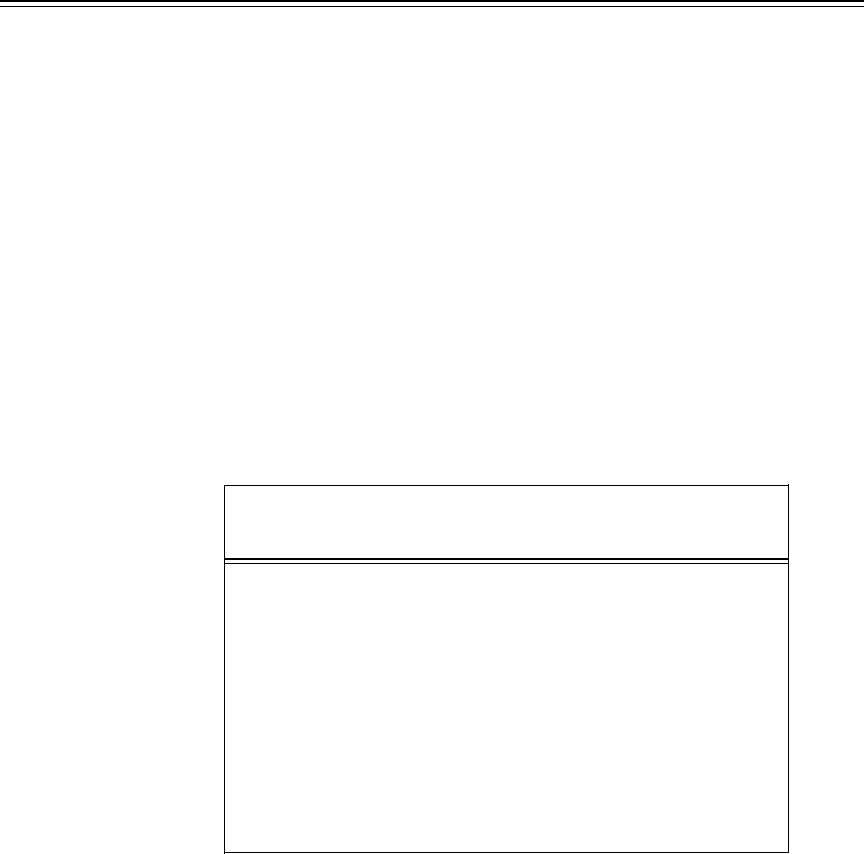
ADMINISTRATION OPTIONS AND REQUIREMENTS — GENERIC 2
7-83
Field 6
Defines the trunk type of a specific trunk group. The ISDN-PRI facilities may be
used to support several different trunk types. These may include both conventional
trunk types as well as the ISDN-dynamic trunk type. An important point to
remember is that the particular service application and the incoming digits are the
primary determining factors that control which trunk type is selected. Most service
applications may be supported (over ISDN facilities) by either a conventional trunk
type or ISDN-dynamic.
Table 7-9, Trunks Supporting Signaling Type 20, shows some permitted field entries
that support signaling type 20.
NOTE: Trunk types not included in the categories listed in table 7-9 may
not be translated for ISDN-PRI service. Most conventional trunk types
specify, as a part of their name, an in/out signaling sequence. Actually,
these signaling sequences are disabled and type 20 signaling is used
exclusively over ISDN facilities.
TABLE 7-9. Trunks Supporting Signaling Type 20
Trunk
Trunk
Description
Type
2-way CCSA/APLT
CO
Data
DID
DMI
FX
ISDN
M/S TIE
Special
WATS
12—15
16, *17 (Note), 18—20
100—107
*30, *31
*108, *109
21—25
120
70—78
2, 5, 6, 50—58, 62, 65—47, 90—93
32—40, *41, *42, *43, 44, 45, *46, *47
26, *27, 28
TIE
NOTE: Trunk types preceded with an asterisk (*) may be selected by trunk type 120 on an as needed CBC Service
Selection basis.
For ISDN trunk groups as well as other types of trunk groups, the entered type defines feature
operation for the trunk group. For example, if a trunk group is assigned the type of 19, incoming
calls over this trunk group are routed to the attendant console. On DID trunk type groups, the switch
expects station number digits on all incoming trunks; on tie trunk type groups the switch can handle
either station number digits or network numbers.
For an ISDN trunk group, a dynamic trunk type (120) can be assigned to the group. This trunk type
allows the group to process calls with a different trunk type on a call by call (CBC) basis. For
example, one incoming call over the group may expect station number digits (for example, a
MEGACOM call), while the next call over the group may expect a network number (for example, an
SDN call).



